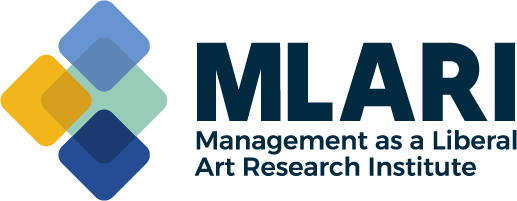The Role of Wisdom
PUBLISHED:
In the first installment of this blog series, I discussed the historical philosophical debates about the nature of knowledge. In Part II, I explored the concept of knowledge work and how it may continue to evolve in the future. In this third installment, I’d like to delve into the notion of how people can use knowledge, information, and data wisely.
Peter Drucker described the practice of Management as a Liberal Art as involving knowledge, self-knowledge, wisdom and leadership (Drucker, 1989). What Drucker termed “wisdom” we might term today. One can be armed with a set of marketing data, or extensive knowledge about an organization’s internal processes, or verifiable information about the competition. But what a person does with that information, data, or knowledge reflects the concept of wisdom.
Wisdom finds its roots in Greek philosophy. Aristotle’s complex system of ethics was grounded in the belief that the search for truth and wisdom was key to creating an effective citizenry of leaders. For Aristotle, wisdom did not just involve learning a set of principles (theoretical wisdom) but also the specific instances of how to apply those principles in daily life (practical wisdom). The Greek term for this kind of wisdom is phronesis: the application of wisdom to practical action. Today, we would refer to this as judgment.
Judgment is not simply the use of reason or the accumulation of a body of knowledge. It involves the application of experience, intuition, emotional intelligence, and other factors. In Leonardo da Vinci’s words, “Wisdom is the daughter of experience.” Information without context can perhaps be useful for some quantitative purposes, but at the end of the day, a basketful of measurable truths needs to be given meaning. How should we act, based on this information? What are the data telling us? Is everything we are presented with important and relevant?
Judgment often involves making a decision of some kind. While Drucker emphasized the importance of using rational methods to arrive at decisions (information gathering, consideration of options, welcoming dissenting ideas), he also valued intuition, experience, and even the “hunch” that seasoned decision makers use as part of the process (Drucker, 1966). While no given decision should rely solely on these factors, these play an important role in virtually all decisions that involve human resources and interactions between people. Even decisions involving data, which will always be incomplete and in many cases inaccurate, will require some degree of critical thinking to ascertain what is relevant and impactful.
What are some things that can get in the way of exercising sound judgment? Some barriers are related to the nature of knowledge and information, and some are related to our human qualities. A few things to consider when thinking about judgment:
· Misinformation: If we rely on inaccurate data, information from poor or unvetted sources, knowledge from people with limited experience, or advice from those who have a very narrow scope and range of knowledge, we can make poor decisions based on incomplete or simply wrong information. This is why discernment regarding the quality of knowledge, information, and data is crucial.
· Filtering Problems: We all have to filter information that comes our way. Sir Andrew Likierman, former dean of the London Business School, notes that few of us absorb what we really need to (Likierman, 2020). We might filter out things that are important simply because they don’t fit with our view of the way things should be. Conversely, we might not filter out information or opinions that are not helpful, and instead focus on those, distracting us from the real issue at hand. It takes skill and practice to learn how to adjust our data/information filtering mechanisms, making sure we aren’t doing too much or too little.
· Narrow focus: We all have our areas of expertise. Lawyers will focus on the details of how a decision might impact an organization’s liability and risk exposure. Marketing will think about expanding opportunities and projecting a brand. Executive decision making requires moving beyond such structural models to a broader model that embraces modalities of different kinds. As Scott Hartley so artfully argues in his book, The Fuzzy and the Techie (2017), the world needs BOTH the liberal arts and the technical disciplines to effectively function. Our new world requires wisdom that transcends disciplines and moves towards effective problem solving.
· Bias and Echo Chamber: We all have implicit bias (Banaji and Greenwald, 2013). This is a reality that we cannot change. What we can do, however, is to increase our awareness so that our bias is acknowledged. Are we naturally risk averse? Do we favor or prefer certain kinds of people in hiring decisions? Do we avoid some scenarios when making decisions because we shy away from confrontation? This level of self-awareness (in Drucker’s language, self-knowledge) is crucial to exercising good judgment. If we surround ourselves with people who merely reinforce these biases, rather than challenging them, we can never grow.
If you are a practicing leader or manager, I’m sure you can think of examples of how these barriers to judgment come into play. What can we do to exercise better judgment ourselves and encourage it in others?
· Insist on quality of data whenever possible.
· Be self-aware of our biases and filtering tendencies and be equally aware of our colleagues’ blind spots.
· Respect the importance of having colleagues who challenge each other.
In our next installment, we’ll consider the role of interdisciplinary thinking in transforming knowledge into actionable wisdom.
Aristotle (350 B.C.E). Nicomachean Ethics.
Banaji, M.R. and Greenwald, A.G. (2013). Blindspot: Hidden biases of good people. Random House.
Drucker, P.F. (1966). The effective executive. Harper & Rowe.
Drucker, P.F. (1989). The new realities. Harper & Rowe.
Hartley, S. (2017). The fuzzy and the techie: Why the liberal arts will rule the digital world. Houghton Mifflin.
Likierman, A. (2020). The elements of good judgment. Harvard Business Review (January-February) https://hbr.org/2020/01/the-elements-of-good-judgment





